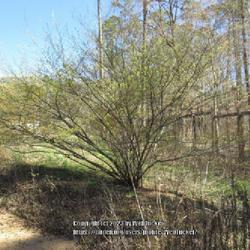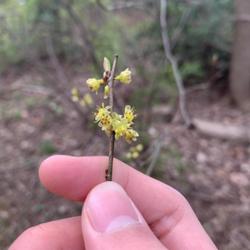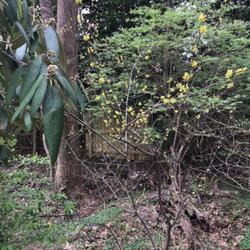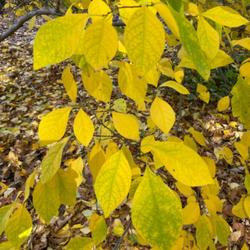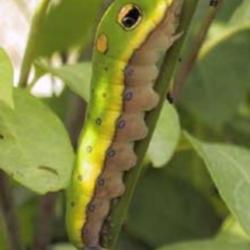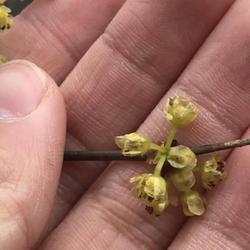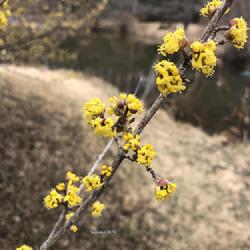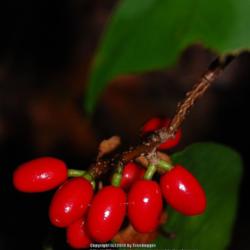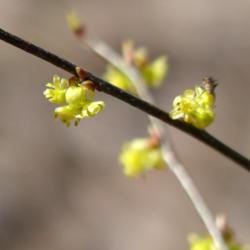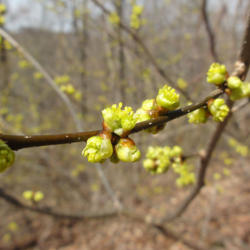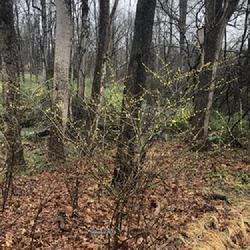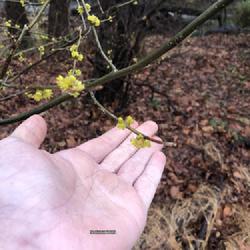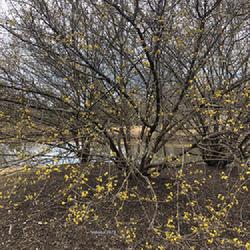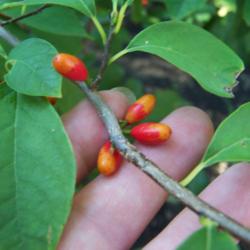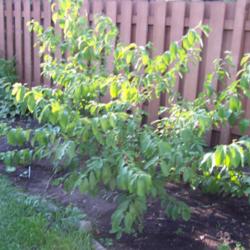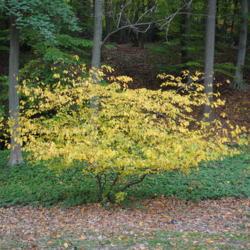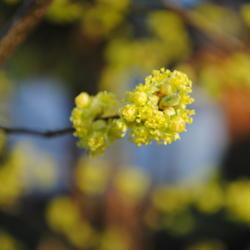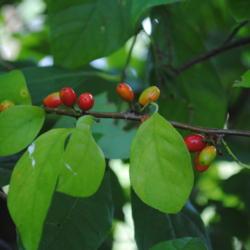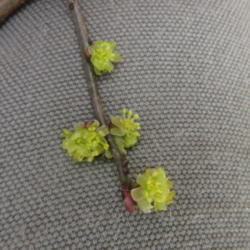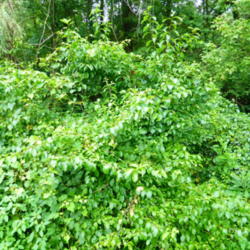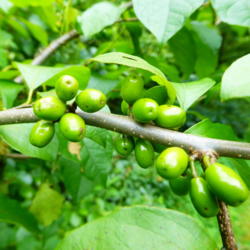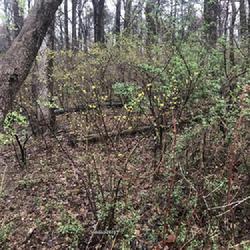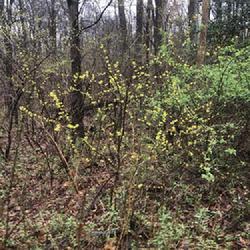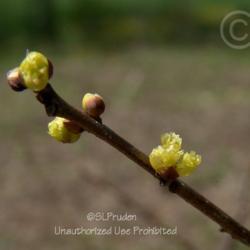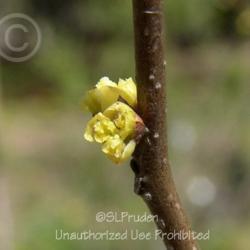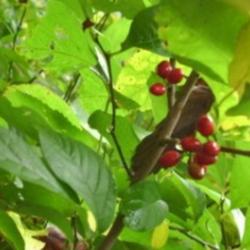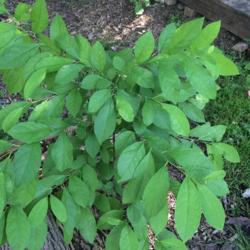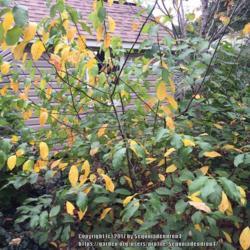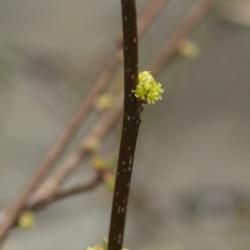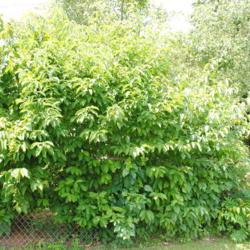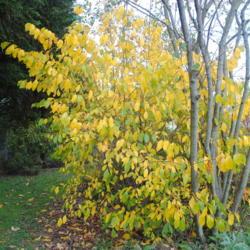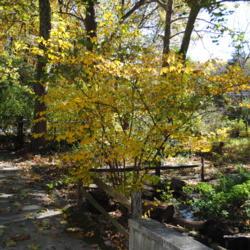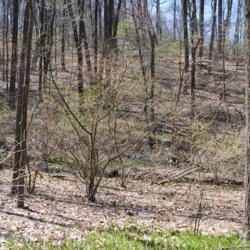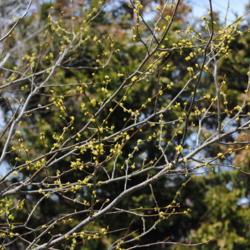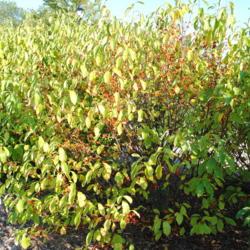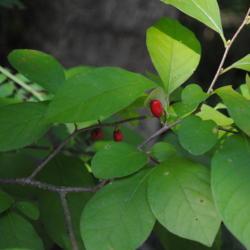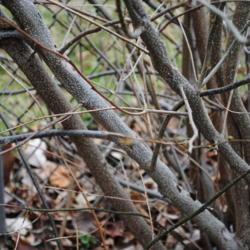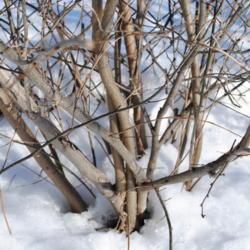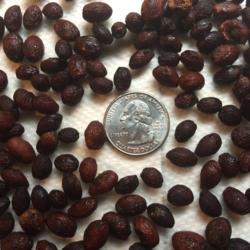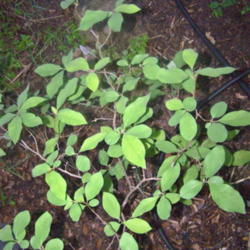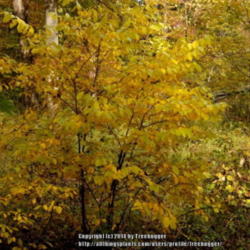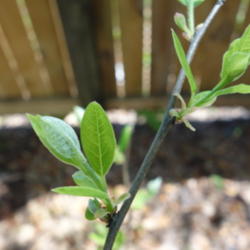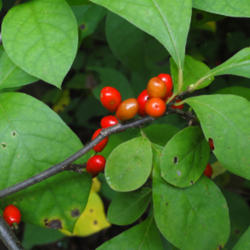Posted by
sherrilosee (Bloomington, IN - Zone 6a) on Aug 21, 2012 7:30 PM concerning plant:
Lindera benzoin (spicebush) is a dioecious shrub. That means that a plant either has male or female reproductive organs in an individual plant - not both. So, in order for pollination to occur successfully, both a male and female plant must be planted. This plant is usually not sexed when you purchase it so, to be fairly certain you have both genders, you must purchase at least 3 or 4. I had one shrub for years that always flowered but never fruited. Last year I learned that it was dioecious, so I purchased 3 more. Sure enough - this year there are berries on two of the shrubs!
Posted by
mellielong (Lutz, Florida - Zone 9b) on Apr 23, 2015 11:59 AM concerning plant:
The book "How to Know the Wildflowers" (1922) by Mrs. William Starr Dana says this is one of the very earliest flowers to be seen in the moist wood of spring. She says during the Revolution the powdered berries were used as a substitute for allspice, while the leaves served as a substitute for tea. She also gives the alternate common names of "Benjamin Bush" and "Fever Bush".
I can say that if you want to attract Spicebush Swallowtails to your butterfly garden, this plant is a must-have. I have only ever found the Spicebush on it despite claims that it is also used by the Tiger Swallowtail and Palamedes Swallowtail. That might be a regional thing, though. Even here in central Florida, the plants lose their leaves in the winter and leaf back out in spring. Also, as a person who raises caterpillars, I will say that this plant smells a lot better than some of the other host plants I have to pick!
Posted by
Sharon (Calvert City, KY - Zone 7a) on Dec 3, 2011 1:55 AM concerning plant:
Sometimes mistaken for forsythia, spicebush produces yellow flowers that appear while the twigs are still barren of leaves.
The prime medicinal use of spicebush is as an agent that reduces fever. It's still used by some herbalists for this purpose. It's also recommend for colds and as a tonic. There's very little scientific evidence to validate this use, but since colonial times the berries have served cooks as a substitute for allspice. The leaves do make a nice tea as well.
Posted by
ILPARW (southeast Pennsylvania - Zone 6b) on Dec 28, 2017 9:38 PM concerning plant:
The Common Spicebush is common in southeast Pennsylvania, wild in and near the woods. It is holding its own alright against the evil invasive Eurasian plants as Amur Honeysuckle, Multiflora Rose, and Privets, and such. This is one of the shrubs that deer don't eat, so that helps a lot with its being around in many places. It is a good quality, neat, clean plant with handsome rounded leaves, small yellow flower clusters, foot-balled shaped red berries loved by birds, smooth gray to brown bark with lots of white lenticels, and excellent yellow autumn color. I dug up three shrubs in 2007 in a doomed field that has gone to development and planted them in my backyard. They are sort of difficult to transplant, so they took a while to adjust, not doing much the first two years, but they have caught on, two males and one female. The male plants have the larger, showier yellow flower clusters while the female flower clusters are smaller and not really showy, but they bear the red fruit. This species does not like strong drought and it is best to keep it out of open locations with strong, dry winds. Its native range is from southern & western New England down into northern Florida to east & central Texas to southeast Kansas through most of Missouri through much of Illinois, southern Michigan into the southeast tip of Ontario, growing in moist, rich woodlands and along creeks and streams. A few large, diverse nurseries may sell some; otherwise, a good number of native plant nurseries sell this species and it is planted in naturalistic or native plant landscapes.
Posted by
Catmint20906 (PNW WA half hour south of Olympia - Zone 8a) on Aug 24, 2014 5:59 AM concerning plant:
Spicebush (Lindera benzoin) is an attractive multiseason shrub native to the eastern United States. Yellow blooms in early spring give way to clusters of red berries in the fall. The foliage turns a bright yellow in the autumn.
Spicebush has great value to wildlife. It is a larval host plant for three butterflies--the Easter Tiger Swallowtail, Palamedes Swallowtail, and Spicebush Swallowtail. It is also a host plant for the Promethean Silkmoth. Birds are attracted to its red berries, and a variety of animals enjoy browsing its tasty leaves, twigs, and bark. It is a must plant for the butterfly garden or for anyone who wants to create wildlife havens in their yards.
Be sure to get both a male and a female for fruiting. Since sex ID is not available in nurseries, the Spicebush is a great opportunity to share seeds or young volunteers among fellow gardeners in order to ensure that everyone has both male and female plants!
